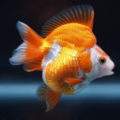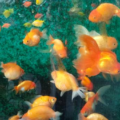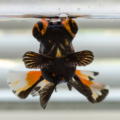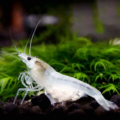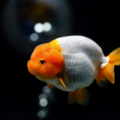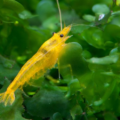The Bubble Eye Goldfish is a freshwater species with a distinct appearance. This aquarium fish has large sacs of fluid under their eyes, making it look like it’s holding its breath underwater. Its distinct looks and physical characteristics make it a favorite among aquarists searching for unique goldfish varieties.

Introduction to Bubble Eye Goldfish
However, the same characteristics that set it apart from other popular aquarium pets may lead to other issues; this is why it’s important to learn how to properly care for this goldfish before purchasing one.
Characteristics of Bubble Eye Goldfish
The bubble eye goldfish is easily recognizable because of its unique physical attributes. Its most prominent feature is the large fluid-filled bubble-like sacs under its eyes.
This goldfish species has wide color variations, ranging from red to orange, yellow, blue, chocolate, calico, and black. Typically, it only grows to a length of 5 inches, which is why the small size of the bubble eye goldfish makes keeping them in smaller tanks much easier.

Habitat and Tank Requirements
The bubble eye goldfish tank size should be at least 10 gallons, but it is recommended to start with 20 gallons if possible. Although they are not the strongest swimmers, ample space would be much appreciated.
Like other goldfish, this species is a cold-water fish and survives best in a habitat with stable water parameters. The water temperature must be around 65°F to 80°F, pH levels at 6.0-7.0, and water hardness at 5-19 dKH.
The aquarium setup for the bubble eye goldfish can be a bit tricky. Its sac is as delicate as it looks, so it’s best to avoid rough items or jagged surfaces that could pop or rupture it. The best goldfish tank mates for your pet are other bubble eyes or telescope goldfish varieties such as black moors.
Author’s Note: For some planted tank decor tips check out our article on The 8 Best Live Plants for Goldfish Aquariums, there are indeed live plants that can thrive in a goldfish habitat!
Diet and Nutrition

The bubble eye goldfish diet should contain slightly higher protein than a regular goldfish diet. Their nutritional needs are peculiar because they need enough calories to help them swim around.
You can feed them with various goldfish food types, including bloodworms, daphnia, tubifex worms, or brine shrimp. High-quality flakes are also a great addition; sinking pellets are recommended instead of floating flakes. A feeding schedule is also important to maintain a routine and prevent overfeeding.
For more on feeding your aquatic pets check out The Ultimate Guide to Fish Food: Pros and Cons & Best Choices!
Health and Care
Due to their delicate characteristics, it’s essential to learn every bubble eye goldfish care technique you can find before you decide to buy one. They are susceptible to common health issues like ich, dropsy, swim bladder disease, and skin flukes.
Adopting preventive care methods like a powerful filtration system and maintaining optimal water conditions is vital. You can also prevent the spread of goldfish diseases by addressing potential health problems immediately and quarantining affected fish.
Breeding Bubble Eye Goldfish

If the breeding conditions are right, breeding the bubble eye goldfish should be straightforward.
To initiate the spawning process, slowly bring the tank’s temperature to about 60 degrees; then subsequently increase the temperature by 3 degrees every day until you reach 68-74 degrees.
As soon as this is achieved, identifying breeding pairs shouldn’t be difficult.
Challenges in Keeping Bubble Eye Goldfish
There are many challenges in keeping a bubble eye goldfish that stem from its under-eye sacs. Delicate fish care methods need to be adopted because these sacs are fragile and prone to injury.
A helpful method of injury prevention is keeping your fish in a barren tank without objects. Appropriate aquarium safety tips, such as maintaining optimum water parameters and quality, must also be adopted.

When it comes to bubble eye goldfish behavior, you can expect them to be very relaxed and peaceful among other species. They swim around looking for food and may have minimal social interactions with other fish.
Because of their gentle personality, the most compatible tank mates are other non-aggressing goldfish. They interact best with the same species, but if you’re considering community tank settings, you should stick with slow-moving fishes like telescope goldfish, black moors, and celestial goldfish.
Maintenance and Cleaning Tips
The nitrogen cycle is an integral part of a tank that controls your pet’s ecosystem.
A proper tank maintenance schedule involves installing a high-quality filtration system to monitor waste recycling and adapting strict cleaning routines.
Your tank should be cleaned with appropriate aquarium cleaning equipment, and 25% of the water changed once a week. A healthy fish environment is the best way to keep your pet happy and alive.
Without maintaining proper water parameters, the tank’s water quality can degrade, which can cause a wide range of issues from cloudy aquarium water to illness and mass fish die off.
Conclusion
Caring for bubble eye goldfish may be challenging due to its delicate features, but an exciting journey is guaranteed if you are up to the task.
If you are committed to responsible goldfish keeping, we recommend researching the peculiarities of the bubble eye goldfish. We hope this guide has provided important aquarium maintenance tips and ways to provide the best pet fish care.



